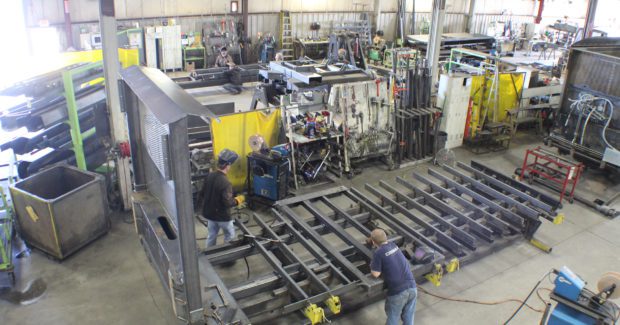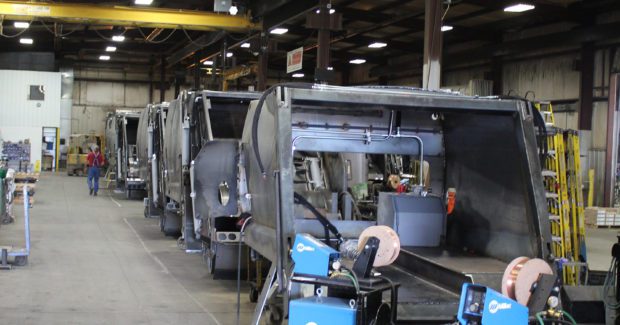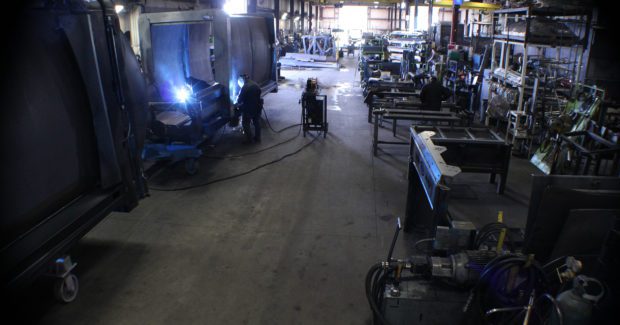How Energy Incentives on New Welding Power Sources Benefit Your Bottom Line
Considering an upgrade to your welding equipment to increase profitability and cut operating costs? Here’s how you can also take advantage of the additional benefits that energy incentives provide for an even greater impact on your bottom line.
Posted: January 24, 2017
Improving energy efficiency and reducing costs are important priorities for most businesses, especially as more operations set increasingly rigorous efficiency targets in an effort to “go green.” For metal fabricators that weld either in the shop or in the field, replacing older welding power sources with new technology is one way to improve energy efficiency and find cost savings that can have a significant impact on their bottom line. Just as with many other technologies, ranging from cars to refrigerators to televisions, new welding equipment brings significant benefits compared to older machines, such as increased power efficiency and improved quality.
While making the investment in new welding power sources provides a financial payback over time through improved energy efficiency and productivity gains, there is additional good news: Many states and utilities now offer a financial incentive for manufacturers and other companies that purchase new welding power sources. This means fabricators can reap the efficiency, productivity and quality benefits provided by a transition to newer, more energy-efficient equipment, while also earning a financial incentive on the purchase. Taking advantage of these offers can benefit the bottom line and add up to significant savings — especially for operations with a large fleet of welders that are not as power efficient as new welding power sources.
INCENTIVES CAN SAVE HUNDREDS
The available energy incentives can help all types of shops accelerate the replacement of their older welding machines with newer ones that are more energy-efficient. States and utilities offer these types of programs because supporting the purchase of newer, more efficient equipment is more cost-effective than adding capacity to the utility grid. These incentive programs vary by state and by utility company, so it’s a good idea to check on the offers available in your region. In some cases, it can mean hundreds of dollars or more per machine in financial incentives or rebates.
For example, Energy Trust of Oregon offers an incentive to industrial, municipal and agricultural customers of certain utilities in the state that provides $1,200 per welding power source. Among the qualifying criteria in that program: the machine must operate at least 2,000 hours per year, less than 26 welding machines are being replaced, and welder size must be between 200 amps and 650 amps. Utility rates vary by state, so the expected savings will vary based on those rates. One power consumption estimate shows annual power cost savings of $47.05 per machine, based on testing with 600 hours of arc time per year. Based on this test, if a manufacturer replaced 20 older machines with new welding power sources, it would result in annual energy savings of $941. Larger machines would offer an even greater energy savings payback.
BENEFITS FOR QUALITY AND PERFORMANCE
In addition to the lower up-front costs that rebates and incentive programs can provide, a transition to newer welding technology can also pay off in numerous other benefits, including greater energy efficiency and improved process quality and productivity. Swapping out old machines for newer systems can typically save a company up to $200 in energy costs per year, per machine. What was state-of-the-art ten years ago may bear little resemblance to welding equipment now and the advantages that new machines offer. Today’s welding power sources provide features that can help shorten prep time, increase deposition rates, decrease operator training time and reduce weld defects and necessary rework — all of which combine to significantly reduce the cost to weld and dramatically shorten the payback of the new equipment.
For example, consider our PipeWorx 400 welding system and PipeWorx 350 FieldPro™, machines that help operations save time with easy process setup and quick process changeover while also allowing companies to significantly improve productivity with a conversion to the advanced wire welding processes made capable by using the systems. Another benefit of newer welding technology is the ability to automatically gather welding intelligence data as an optional enhancement. One example is our Insight Welding Intelligence™ system that offers solutions ranging from basic dashboard reporting of weld parameters to real-time operator feedback. These enhancements can help welding operations quickly detect weld defects, identify missed welds and achieve full traceability, all benefits that help businesses improve their quality and productivity and manage costs.
Besides the proven return on investment in the form of energy savings, new welding power sources also provide consistent arc starts and stops, and smooth, stable arc performance that is more forgiving to variations, all of which can result in improved weld quality. The stable arc also means minimal spatter for reduced time needed for cleanup. Plus, these results are achievable with fewer controls to set on the machine, for greater ease of use. For example, our XMT® 350 and 450 Series multi-process welders offer excellent arc performance and greater portability for jobsites. In addition, available ArcReach™ technology also helps operations improve productivity, allowing welding operators to make parameter adjustments at the wire feeder without the additional control cable traditionally needed for remote output control. New welding power sources can also offer more portability and space savings, due to their smaller size and weight.
GET THE POWER TO SAVE
Welding power source systems manufactured today operate more efficiently, creating payback and return on investment through energy savings. Most states offer financial incentives to businesses that update their welding equipment to newer, more energy-efficient machines. Upgrading to modern welding power sources can also provide process controls that help produce high-quality welds faster, while also being easy to learn and use. Companies that are considering an upgrade to welding equipment in an effort to increase profitability and cut operating costs can take advantage of the additional advantage these incentives provide — for an even greater impact on their bottom line.


















